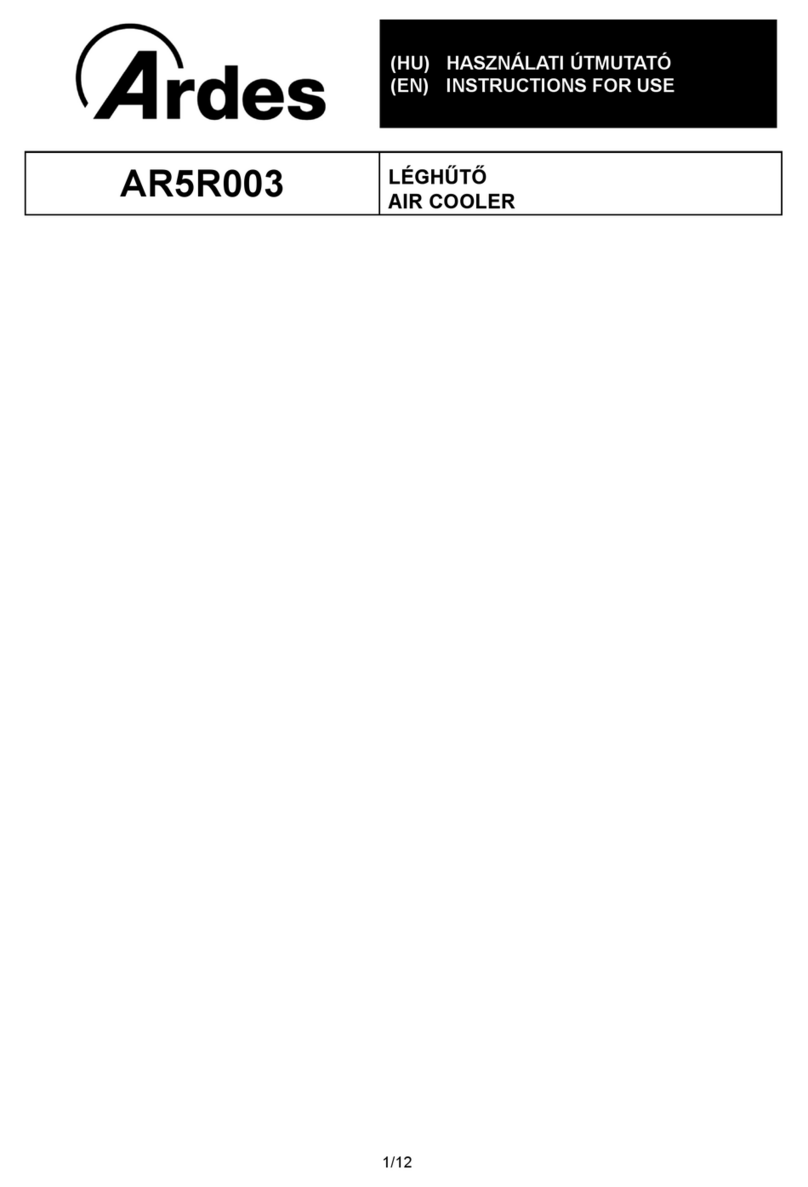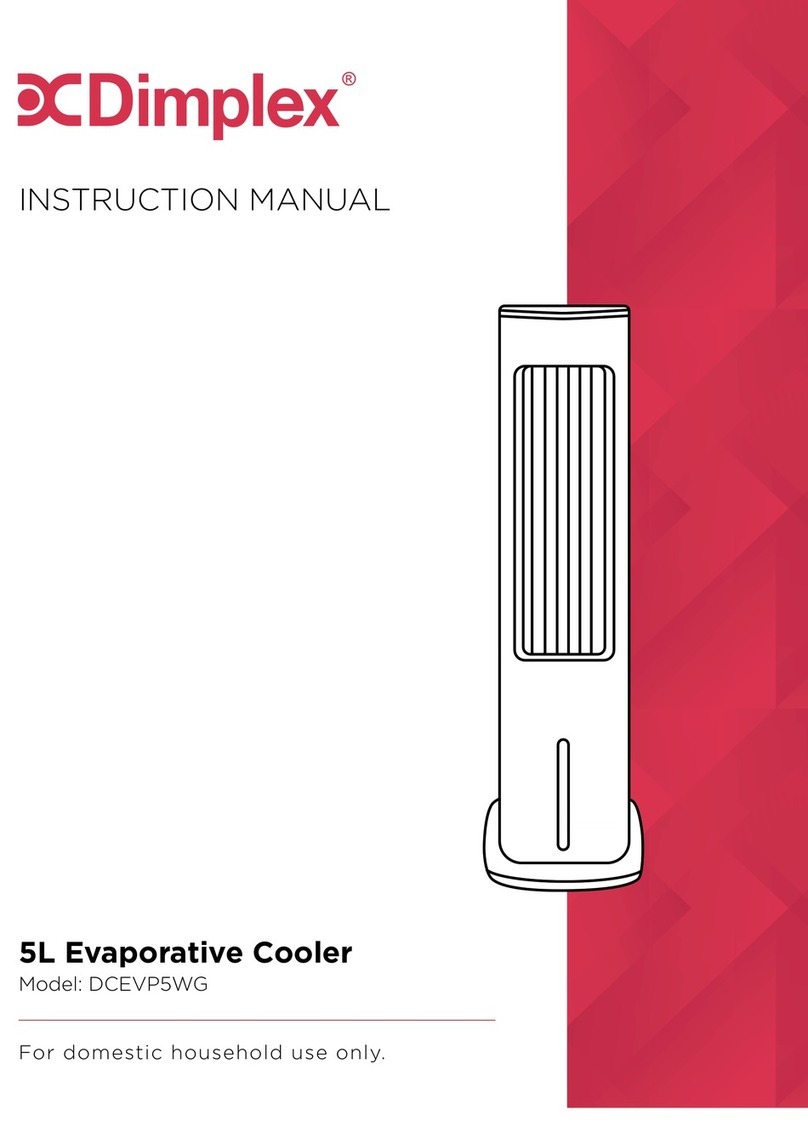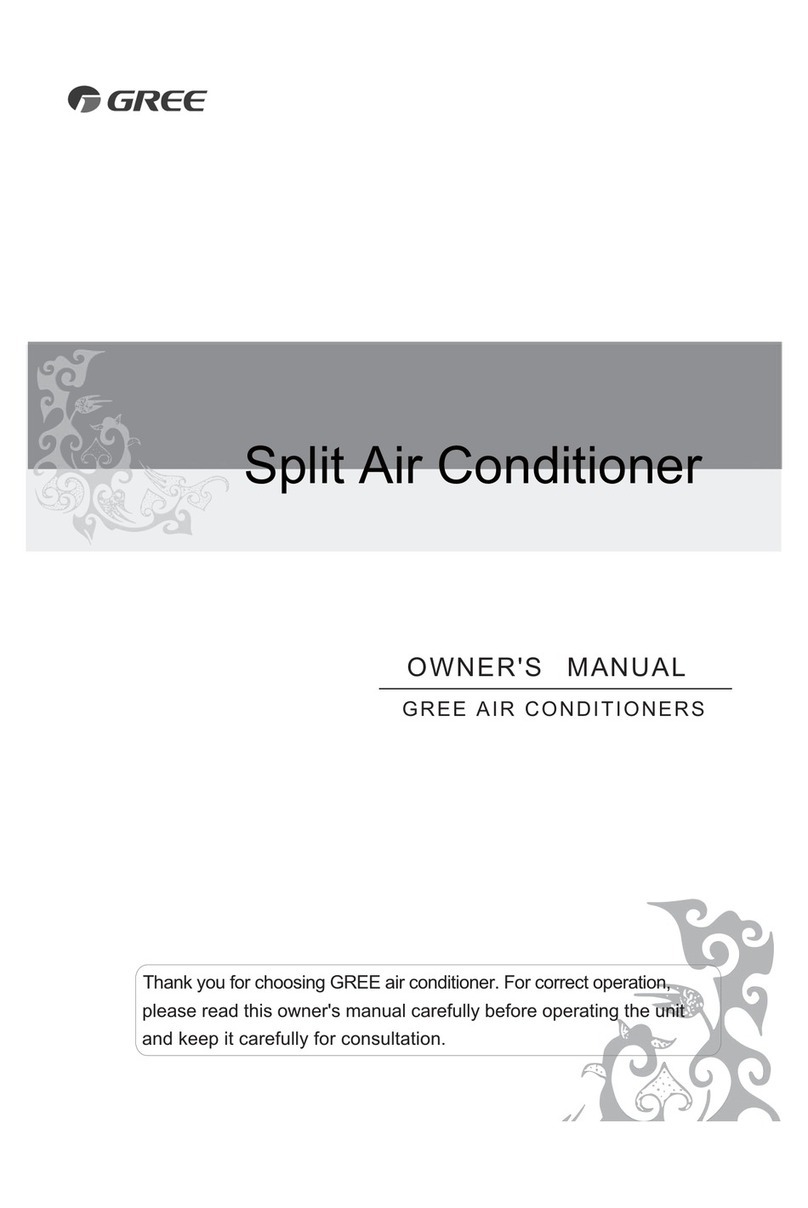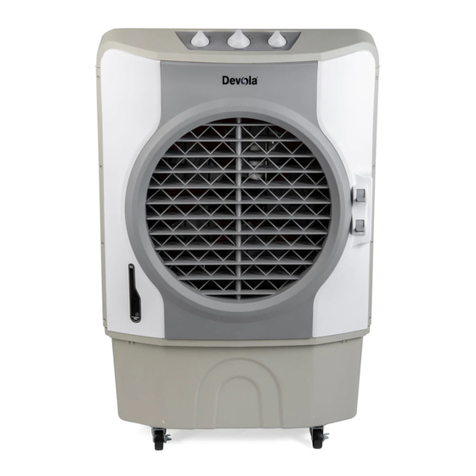ClimateWorx ClimateWorx Series Operating manual

Maintenance Guide
ClimateWorx International Inc.
Maint-CL2016.doc14 Chelsea Lane, Brampton, Ontario, Canada L6T 3Y4

Vertical Floor /Wall /Ceiling Mount - Maintenance Manual
Maint-CL2016.doc
2

Vertical Floor /Wall/Ceiling Mount - Maintenance Manual
Maint-CL2016.doc 3
TABLE OF CONTENTS
MAINTENANCE 4
GENERAL SERVICE AND INSPECTION 4
REGULAR INSPECTION 4
SENSOR CALIBRATION CHECK 4
PREVENTIVE MAINTENANCE: QUARTERLY 5
REPLACEMENT OF AIR FILTERS 5
MICROPROCESSOR CONTROLLER 6
POWER PANEL 6
COMPRESSOR LUBRICATION 6
COOLING COIL AND REFRIGERATION SYSTEM 7
CONDENSER 7
ELECTRIC MOTOR 7
BLOWER FAN 8
ELECTRIC HEATER 8
HUMIDIFIER 8

Vertical Floor /Wall /Ceiling Mount - Maintenance Manual
Maint-CL2016.doc
4
MAINTENANCE
The ClimateWorx Series Vertical Floor Mount familycomputer room air-conditioning unit employs carefully
selected components of proven quality to ensure prolonged trouble-free operations. Maintenance-free solid state
controllers also enhance the reliability of the whole system.
ClimateWorx uses one microprocessor controller to centralize all control and monitoring functions which makes
the machine user friendly and simplifies maintenance routine and fault finding procedure. The maintenance
practice which are given below are for guidance only and are for general service and maintenance to minimize
wear and tear resulting from normal operation and for insurance that the machine will be operating under the
most efficient condition.
Maintenance is classified into two categories, i.e. general service and preventive maintenance. General service,
including regular inspection may be carried out by unskilled personnel of the client. Preventive maintenance
however must be performed by competent service personnel familiar with the servicing of air-conditioning,
electrical and electronic engineering equipment. Our authorized service agents have been carefully chosen to
provide efficient and quality service to our clients.
GENERAL SERVICE AND INSPECTION
Although the status of the machine and the environmental conditions are under the constant surveillance of the
controller and any abnormality will be announced either as out-of-limit warning or alarm, there is, however no
place for complacency if efficient and reliable service is demanded from these well engineered machines. We
recommend that the following procedures should be followed.
REGULAR INSPECTION
The machine should be inspected periodically to ensure that no unusual noise or changes in operation are
present. Any abnormalities should be investigated immediately by qualified air-conditioning personnel.
SENSOR CALIBRATION CHECK
This procedure should be followed if sensor is found to be out of calibration.
Advanced M52 Sensor Calibration
1. Go to setting tab on page 6 and scroll down to the bottom of the page where you will find Temperature and
Humidity offset settings. While measuring the actual temperature and humidity in the space you can make
adjustments to these settings to have the sensor read the space temperature and humidity more accurately.
This is the only calibration function available. If the sensor is still reading out of specification sensor should
be replaced.
M52 Sensor Calibration Temperature
2. Power off unit, locate temperature/humidity sensor board and set the jumper, JP1, to points 1 and 2 for zero
setting. The pin 1 and 2 of the sensor board should read approximately 1000 ohms which corresponds to
0°C for the Hycal PT100 sensor.

Vertical Floor /Wall/Ceiling Mount - Maintenance Manual
Maint-CL2016.doc 5
3. Switch unit on, wait 60-120 seconds, and login to security level 1. Go to the sensor page under the [Test
mode] tab, press the “Def.” and then “Set 0” key next to the temp1 reading. The Temp1 reading should now
read 0°C
4. Power off the machine and reset the jumper, JP1, to point 3 and 2 on the sensor board.
The zeroing of the temperature sensor is now complete. You can further fine tune sensor to what you actually
measure by simply entering the measured temperature in °C in the Main Temp setting under the [Setting] tab.
Relative Humidity
There is no zeroing function for the humidity sensor.
1. Login security level 1. Go to the sensor page under the [Test mode] tab and press the “Def.” Key next to the
Humid. 1 reading.
2. If required, fine tune sensor to what you actually measure by simply entering the measured relative humidity
in the Main Humidity setting under the [Setting] tab.
SERIES V Calibration procedure
This procedure should be followed if sensor is found to be out of calibration or changed.
Switch unit on and allow room to stabilize. Measure dry bulb temperature and relative humidity using a sling-
psychrometer or similar device. Enter top security mode (see user guide) and enter the dry bulb reading into
address 44 on the controller1. Enter relative humidity into address 47 on the controller. This adjusts the
correction factor in the controller automatically calibrating the sensor.
1) If the unit is set to display in °F enter the actual room temperature in °F minus 32. ie: Room
temperature is 68 enter 36 in address 44
PREVENTIVE MAINTENANCE: QUARTERLY
For the machine’s warranty to be valid, regular maintenance comprising four visits per annum should be
undertaken by qualified personnel or staff of our appointed agents.
REPLACEMENT OF AIR FILTERS
Visually check the air filters for cleanliness. If in doubt, use a manometer to measure the pressure differential
before and after the filter. If the pressure-drop is more than 0.8 inches w.g., the filters should be replaced.
Ensure filters being replaced are being replaced with filter with the same MERV rating.
I. Changing filters on down flow machine
Switch off the machine and open the side panel(s) of the machine on either (or both) side. The filters are on the
upper part of the unit and can be taken out by sliding the filter horizontally out from the machine. After
removing all dirty filters, put new clean filters in ensuring that airflow direction arrow points into machine.
Restore panels back to the machine.

Vertical Floor /Wall /Ceiling Mount - Maintenance Manual
Maint-CL2016.doc
6
II. Changing filters on up flow machine
Switch off machine, open the side panel(s) on the rear return air machines or the front panels on standard
machines. The air filters can be taken out by sliding horizontally to either end of the machine. Install clean
filters and ensure that airflow direction arrows point into machine. Restore plenum panels onto the machine.
III. Changing filters on packaged air cooled section only
Switch off machine, open the side panel(s) on the condenser section. The air filters can be taken out by sliding
horizontally to either end of the machine. Install clean filters and ensure that airflow direction arrows point into
the machine. Securely close and latch panels(s) and switch on the machine.
MICROPROCESSOR CONTROLLER
The state-of-art solid state microprocessor based controller is virtually trouble free and little or no maintenance is
needed. Quarterly checks of the following are recommended for efficient operation of the machine. To control
individual operations refer to ClimateWorx User Guide pages 34 to 36.
Note: The fan must be kept running through individual tests.
1. Check controller display.
2. Check alarm operation and calibrate where necessary.
3. Check accuracy of sensors and calibrate where necessary.
4. Check weekly operation program and real time clock.
5. Check keyboard functions.
6. Check output voltage of controller.
POWER PANEL
1. Check operation of all MCBs, and contactors.
2. Check current in each motor and heater circuit.
3. Check operation of overload devices.
4. Check cable terminations for tightness.
COMPRESSOR LUBRICATION
The refrigeration compressors must have adequate lubrication to ensure trouble-free operation and a long life.
On the start-up of any new system, some oil will be lost to coat the inside of the piping, some logged in low
velocity areas of the system, and some will be kept in circulation. This lost oil must be made up by adding new
oil to the system after the initial start-up. Very low compressor oil levels can cause complete loss of lubrication
and may result in an immediate compressor failure if not protected against.
The loss of oil can also be caused by flooded starts or refrigerant migrating to the oil during an off period and
pulling the oil out of its sump during the sudden pressure drop of a start-up.
The level should be observed in the sight glass immediately after the compressor shutdown, while it is still
warm. The level observed when the compressor is not running for a long period may be a mixture of oil and
refrigerant which would not be a true indication of the oil level when the compressor is running.

Vertical Floor /Wall/Ceiling Mount - Maintenance Manual
Maint-CL2016.doc 7
If the oil level in the sightless of the compressor is less than one-eighth (1/2) up from the bottom of the glass,
this indicates a low oil level. If the oil level is up more than one-half (3/4) from the bottom, his indicates a high
oil level. Therefore, the oil level should be 1/2 to 3/4 up the sight glass when the compressor is running.
Notes:
1. Allow compressor to run for at least 10 minutes before checking sight glass.
2. Unit sizes 6 to 12 tons do not have sight glass.
COOLING COIL AND REFRIGERATION SYSTEM
The refrigeration circuit shall be inspected each month for proper function and signs of wear and abnormality.
In most cases signs of deterioration of component parts give prior warning to system failure. Periodic inspection
is essential to detect and prevent failure.
The liquid line sight glass should be inspected for the presence of bubbles and moisture. Bubbles in the circuit
indicate a shortage of refrigerant in the system and changing of the indicator color from green to yellow denotes
presence of moisture. If moisture is detected change filter drier and refrigerant as required. If charge is found to
be low, check system for leak using current ODP procedures.
1. Check cleanliness of coil.
2. Check cleanliness of stainless steel drain pan and drain system.
3. Check operation of controls.
4. Check operation of drier filter, sight glass and valves.
Once all of the checking and adjusting of the refrigeration circuit is complete make sure that all pipes, distributor
tube and capillary lines are not in contact with each other or other objects that will result in premature failure
from wear. It is the responsibility of the maintenance personal to assure this step has been followed.
CONDENSER
a. Air Cooled Condensers
1. Check condition of condenser coil.
2. Check and clean all debris from underside of coil to ensure that airflow is not blocked.
3. Check refrigerant line for leakage or damage.
Note: On packaged air cooled Series 6 units there are filters that require maintenance. Please see note above in
replacement of air filters section.
b. Water Cooled Condensers
1. Check operation of valves.
2. Check pipe work and fittings for leakage.
ELECTRIC MOTOR
Totally enclosed air cooled electric motor with class F insulation and IP55 is our standard.
1. Check motor current.
2. Check bearing condition and grease or replace where necessary.

Vertical Floor /Wall /Ceiling Mount - Maintenance Manual
Maint-CL2016.doc
8
BLOWER FAN
Special design blower fans with strengthened bearing and mounting arrangement driven by double belt pulley
system is our standard design. Regular maintenance should include:
1. Check motor current and bearing.
2. Check fan belt tension and adjust where necessary.
3. Check fan bearing for noise and wear and tear for twin blower unit.
4. Check blower tightness on shaft.
5. Periodically clean dust and debris from blower wheel, as this can cause an imbalance and lead to further
problems.
The fan belt shall be checked monthly for signs of wear and proper tension. Depressing the belts midway
between pulley and sheaves should produce a displacement of between 10 mm to 20 mm. Tight belts may cause
excessive bearing wear and loose belt will cause slippage. Belt tension can be adjusted by turning the
adjustment screws on the motor mounting slide.
ELECTRIC HEATER
1. Check current of heater.
2. Check mounting bracket.
HUMIDIFIER
The humidifier consists of an electrode steam boiler for high efficiency and quick response. Automatic flushing
of the water using an auto-adaptive process enhances boiler life and maintains full output over the life span of
the boiler.
1. Check operation of fill and drain solenoid valves.
2. Check and clean fill valve inlet strainer.
3. Check high water level sensor. (When replacing steam boiler)
4. Check boiler condition and water level.
The humidifier is designed to operate on ordinary tap water. Minerals will collect in the disposable bottle and the
microprocessor will alarm when the bottle requires replacing. The quantity of such deposits and the life span of
the bottle depend on the quality of the city water supply.
Table of contents
Other ClimateWorx Air Conditioner manuals
Popular Air Conditioner manuals by other brands
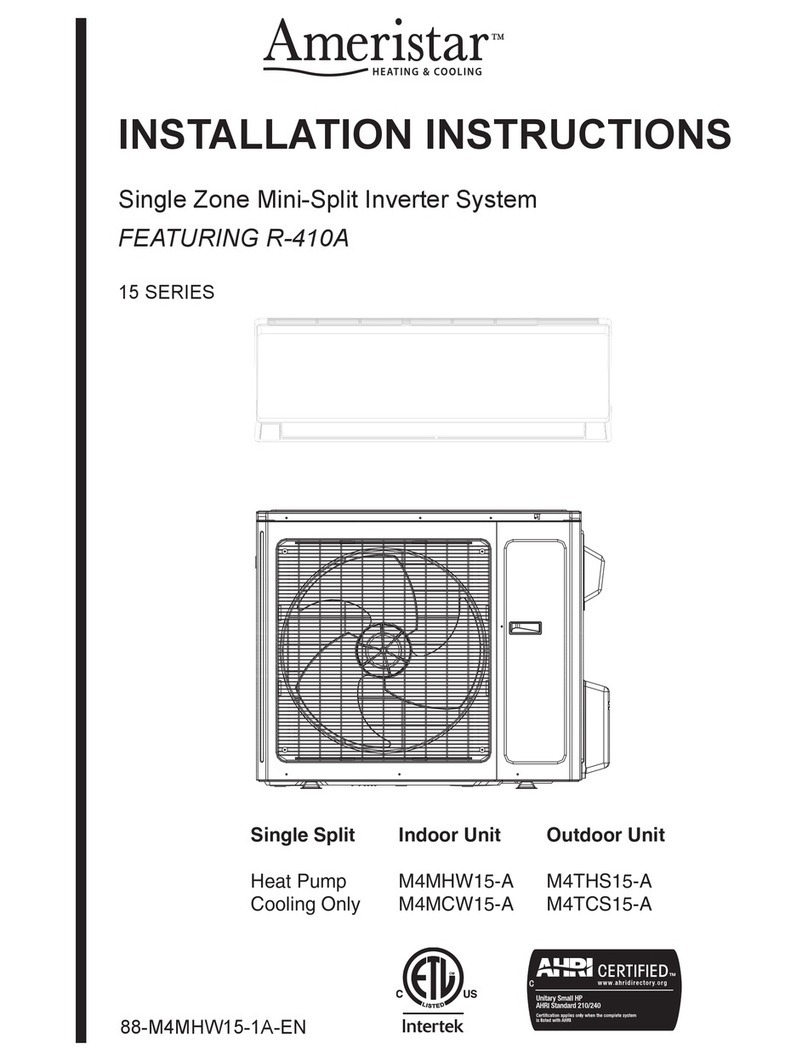
Ameristar
Ameristar M4MHW15-A installation instructions

Carrier
Carrier Fan Coil 42B Installation, operation and maintenance manual
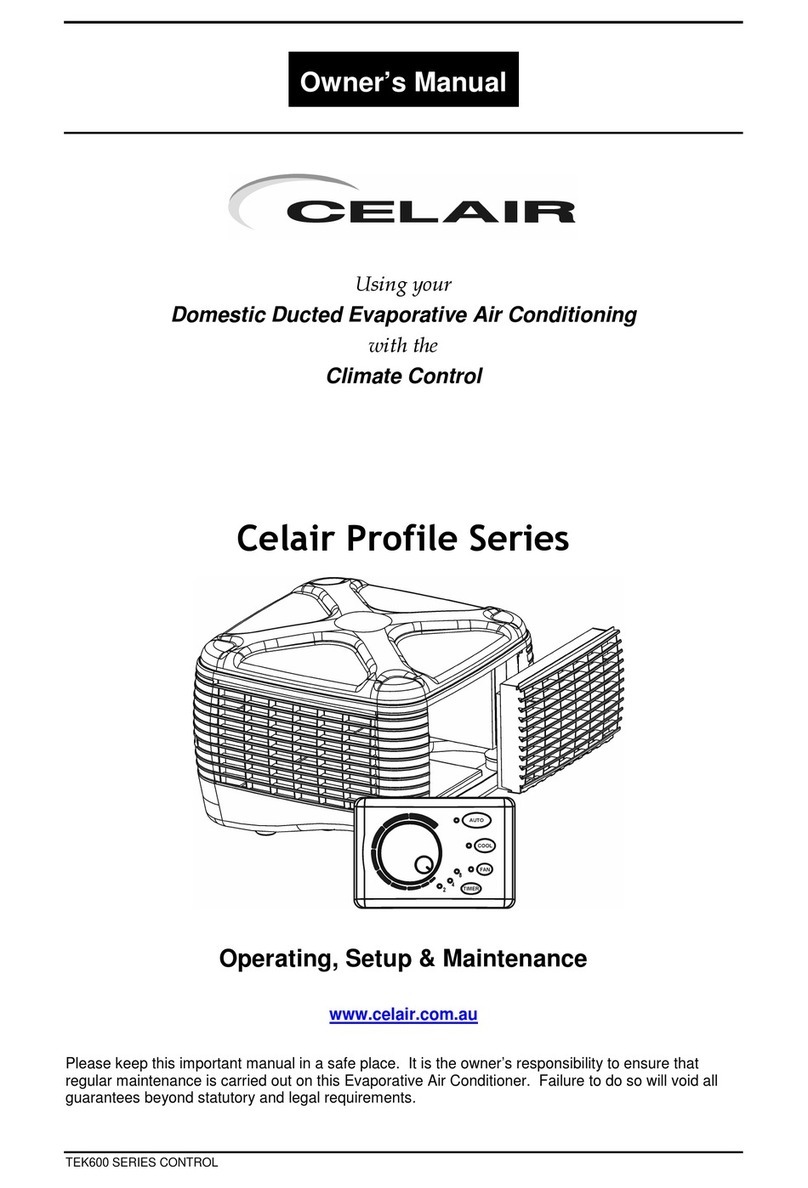
Celair
Celair Profile Series owner's manual
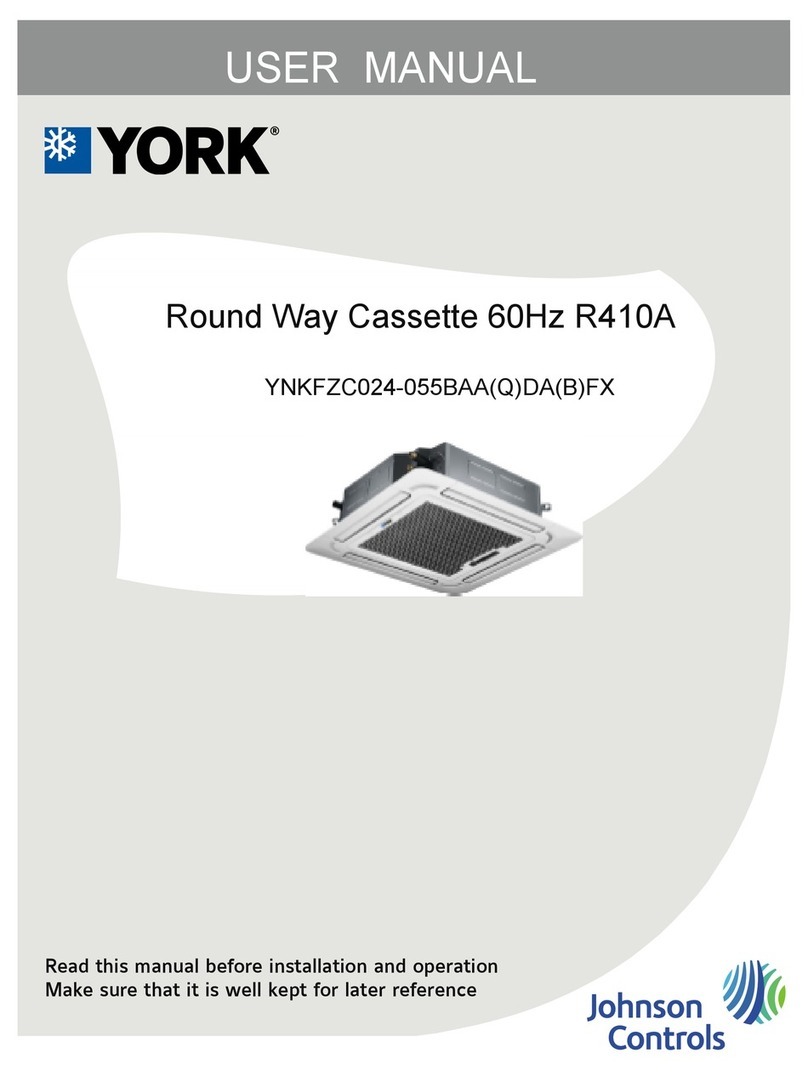
York
York YNKFZC024-055BAADAFX owner's manual

Mitsubishi Electric
Mitsubishi Electric MSC-GE20VB operating instructions
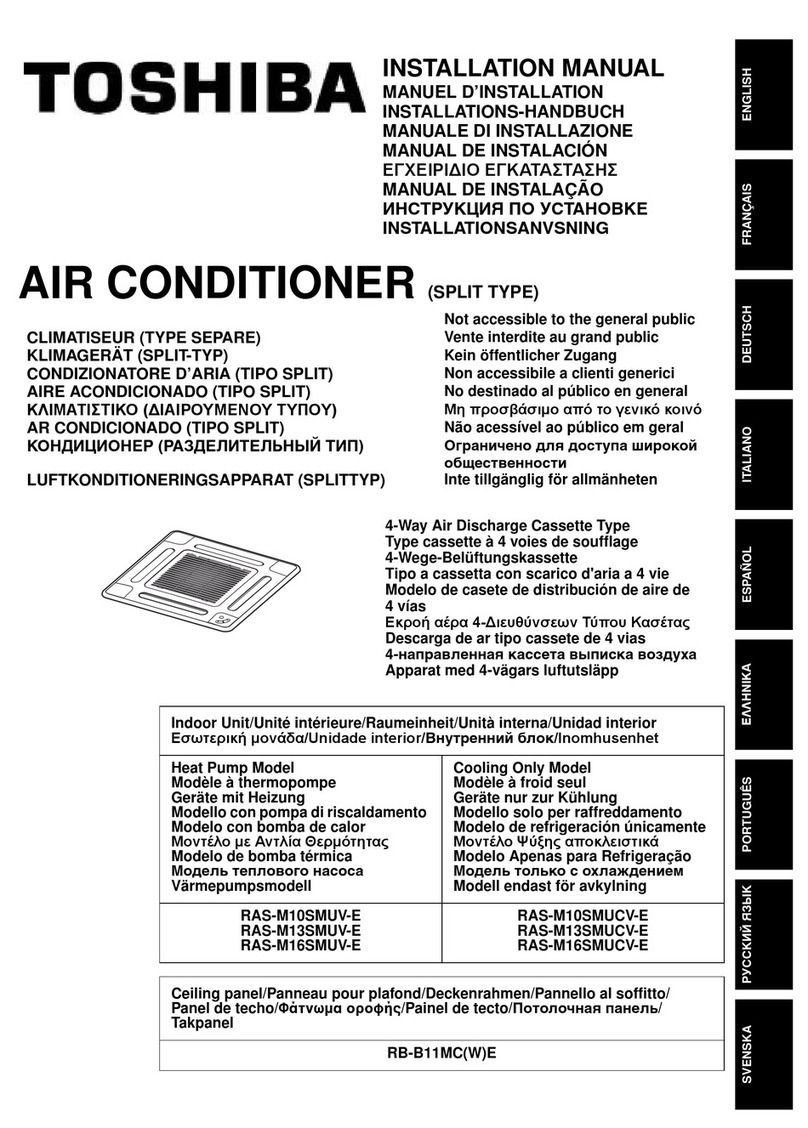
Toshiba
Toshiba RAS-M10SMUV-E installation manual

Haier
Haier HSU-10VNJ17 Operation manual
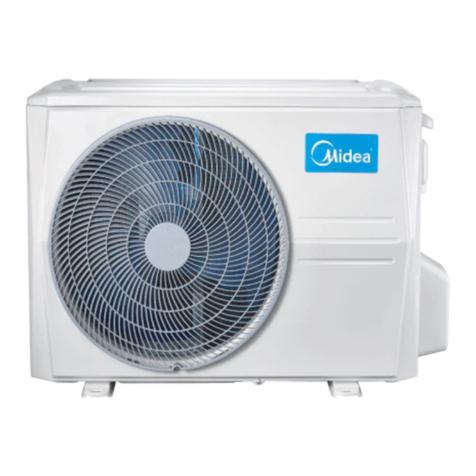
GD Midea Refrigeration Equipment
GD Midea Refrigeration Equipment Elite Series Technical & service manual
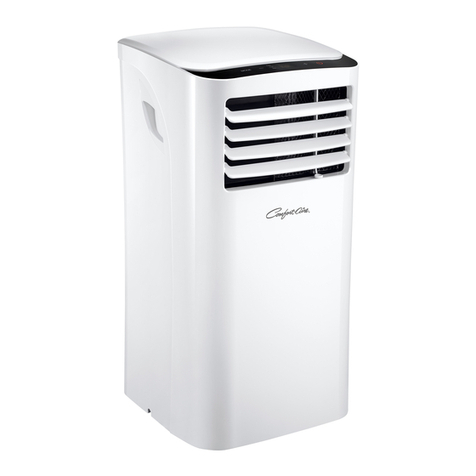
Mars
Mars COMFORT-AIRE PS-81G Owner's manual & installation manual

LG
LG MT11AH installation manual

Hitachi
Hitachi airHome 400 DJ Series Operation manual
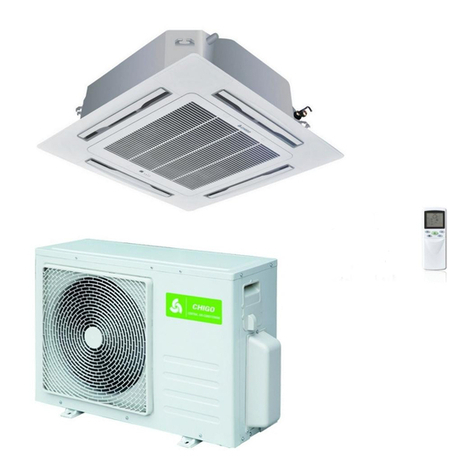
Chigo
Chigo CCB-12HR1 Technical manual




